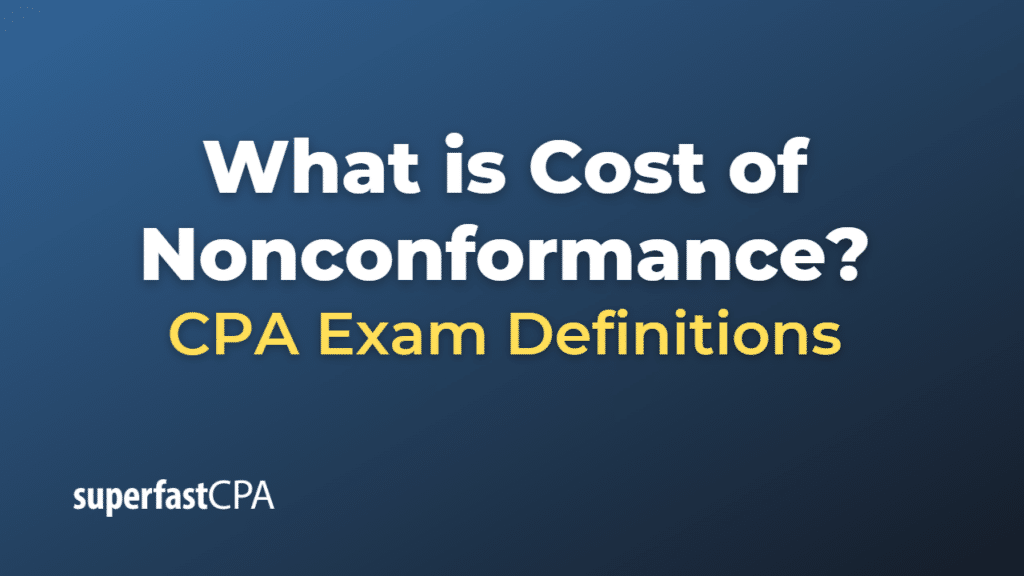Cost of Nonconformance
The cost of nonconformance, also known as the cost of poor quality, refers to the costs incurred when a company’s products or services do not meet its established quality standards. This cost is a component of the total cost of quality, a concept used in management and quality control to measure the financial impact of producing goods or services that are not up to standard.
The cost of nonconformance can be divided into two categories:
- Internal failure costs: These are costs related to defects found before the product reaches the customer. Examples include waste, scrap, rework or repair costs, and downtime due to quality issues.
- External failure costs: These are costs related to defects found after the product has been delivered to the customer. Examples include warranty claims, product returns, recalls, complaints, and potential lost sales due to a damaged reputation.
In a well-managed business, it is expected that the cost of nonconformance would be minimized. This is achieved by investing in prevention and appraisal costs, which include quality planning, training, process control, and quality assurance activities. The goal is to catch and address issues as early as possible in the process, which is usually more cost-effective than dealing with defects later on.
Example of Cost of Nonconformance
Let’s consider an example of a company that manufactures laptops.
- Internal failure costs: If during the production process, the company discovers that a batch of hard drives is defective, the cost of reworking those laptops to replace the faulty hard drives, along with the cost of wasted time and materials, is part of the internal failure costs. If the problem is severe enough that the production line has to be halted, the cost of this downtime would also be considered an internal failure cost.
- External failure costs: Now, let’s say some defective laptops managed to get past quality control and were sold to customers. If those customers experience hard drive failures, they may return the laptops for repair or replacement, which would be a direct cost to the company. Additionally, they might post negative reviews online or tell their friends about their bad experience, potentially leading to lost future sales. These costs related to customer dissatisfaction and damage to the company’s reputation are considered external failure costs.
By investing in better quality control (appraisal costs) and improved production processes (prevention costs), the company could potentially reduce both internal and external failure costs. For instance, a more rigorous testing process might catch the defective hard drives before the laptops leave the factory, and investing in better quality components from the start might prevent the defect from occurring in the first place.













